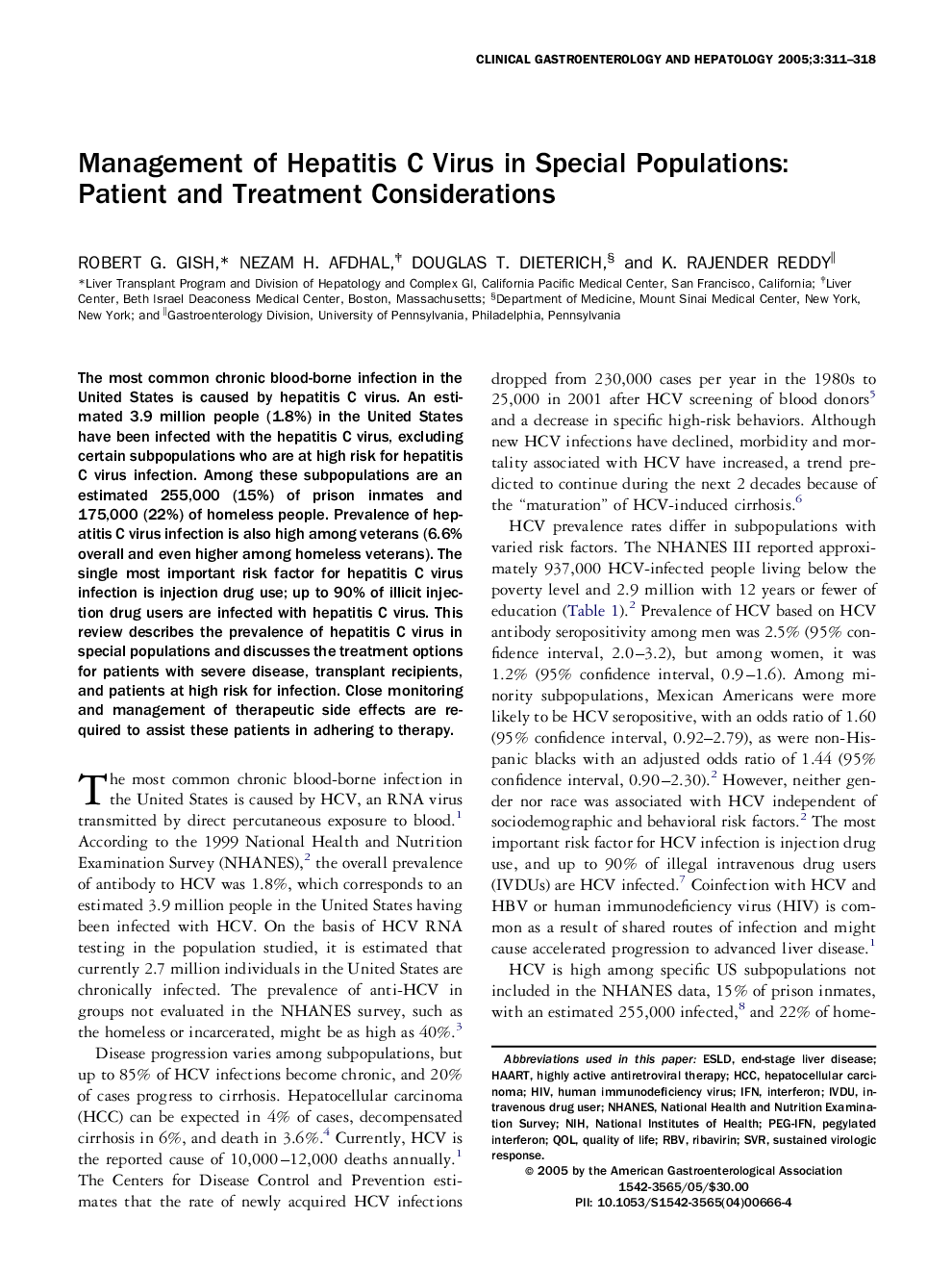| Article ID | Journal | Published Year | Pages | File Type |
|---|---|---|---|---|
| 9241802 | Clinical Gastroenterology and Hepatology | 2005 | 8 Pages |
Abstract
The most common chronic blood-borne infection in the United States is caused by hepatitis C virus. An estimated 3.9 million people (1.8%) in the United States have been infected with the hepatitis C virus, excluding certain subpopulations who are at high risk for hepatitis C virus infection. Among these subpopulations are an estimated 255,000 (15%) of prison inmates and 175,000 (22%) of homeless people. Prevalence of hepatitis C virus infection is also high among veterans (6.6% overall and even higher among homeless veterans). The single most important risk factor for hepatitis C virus infection is injection drug use; up to 90% of illicit injection drug users are infected with hepatitis C virus. This review describes the prevalence of hepatitis C virus in special populations and discusses the treatment options for patients with severe disease, transplant recipients, and patients at high risk for infection. Close monitoring and management of therapeutic side effects are required to assist these patients in adhering to therapy.
Keywords
ESLDRBVPEG-IFNSVRHAARTQOLNHANESIVDUNIHQuality of lifeHCCinterferonPegylated interferonIFNNational Health and Nutrition Examination Surveyend-stage liver diseasehighly active antiretroviral therapyRibavirinNational Institutes of Healthintravenous drug userhuman immunodeficiency virusHIVSustained virologic responseHepatocellular carcinoma
Related Topics
Health Sciences
Medicine and Dentistry
Gastroenterology
Authors
Robert G. Gish, Nezam H. Afdhal, Douglas T. Dieterich, K. Rajender Reddy,
